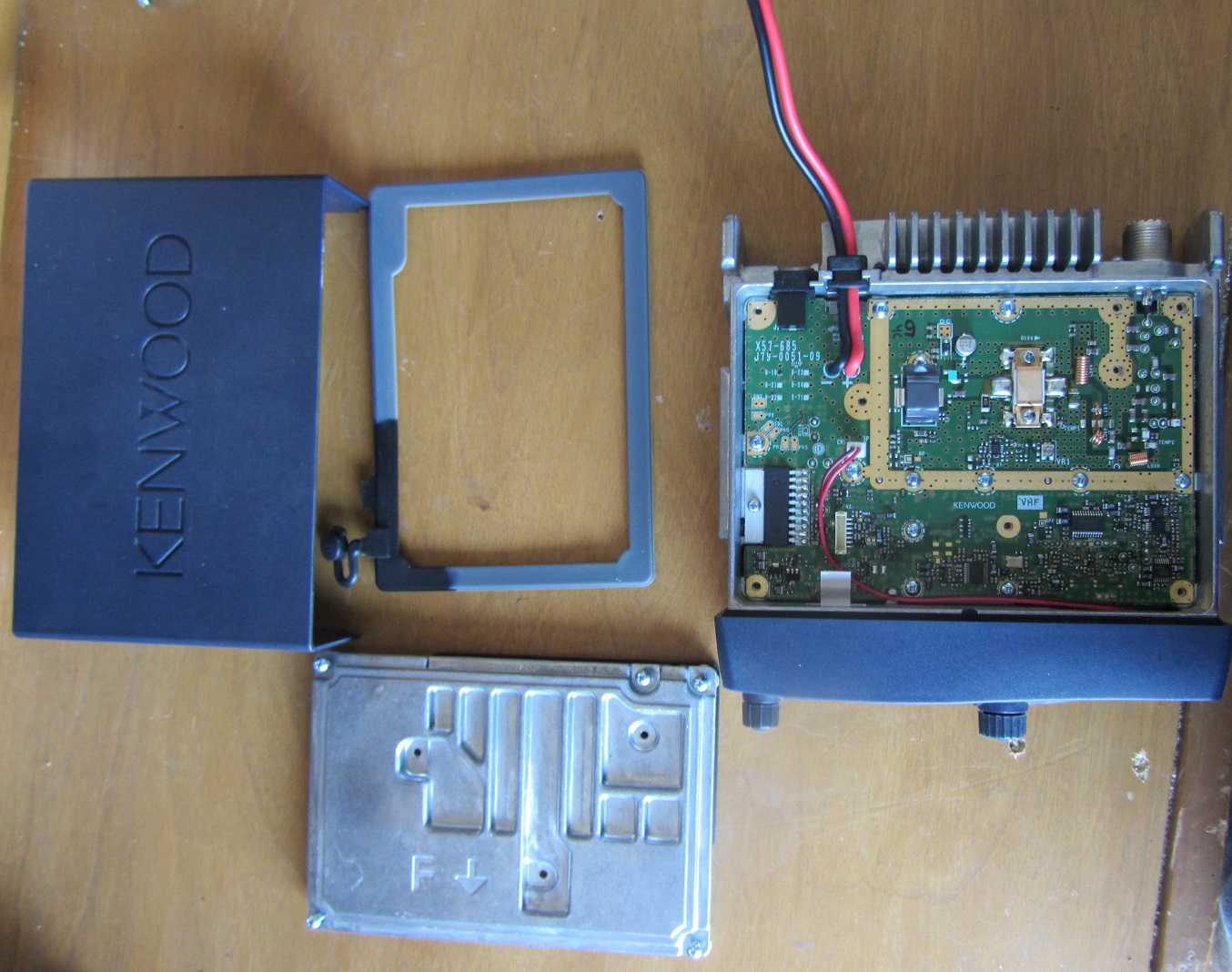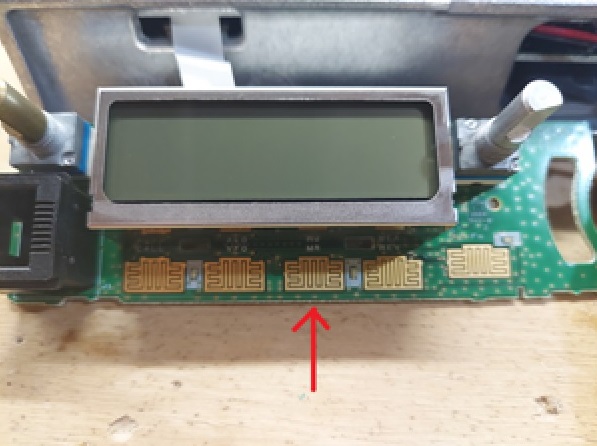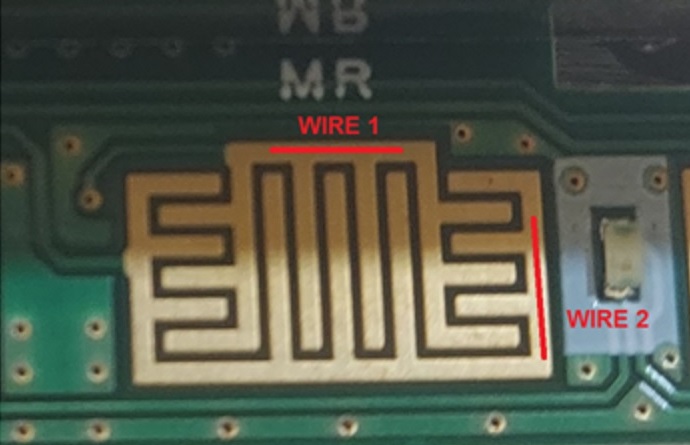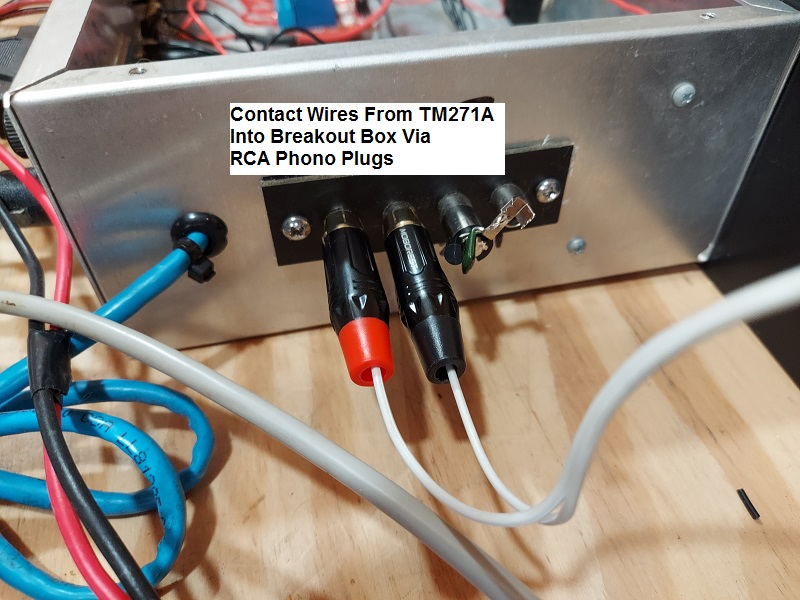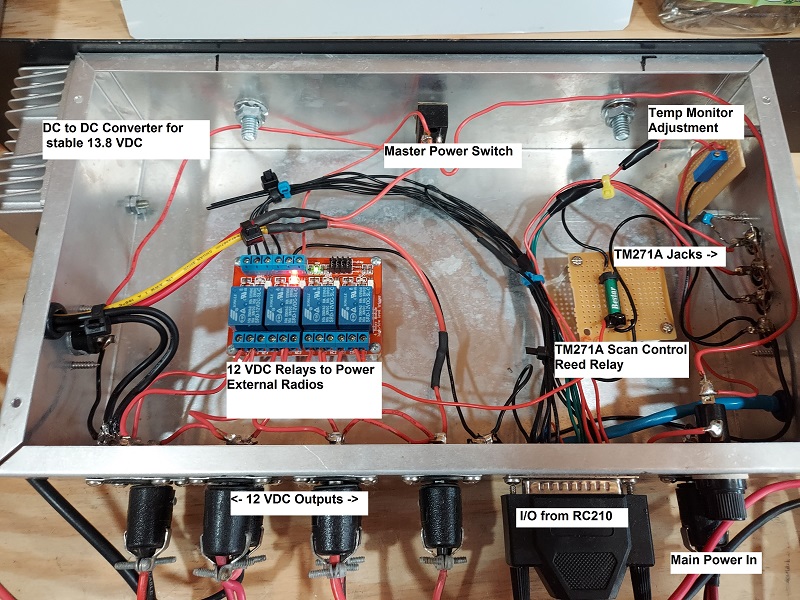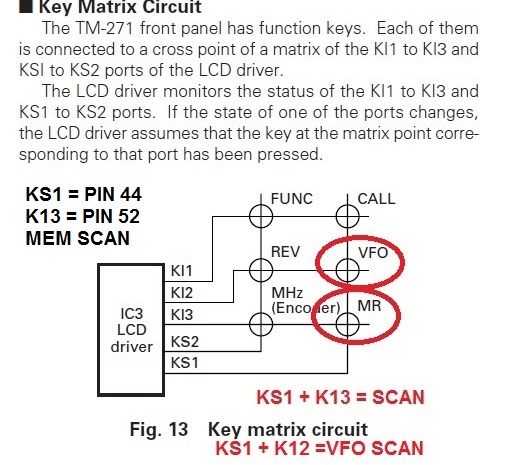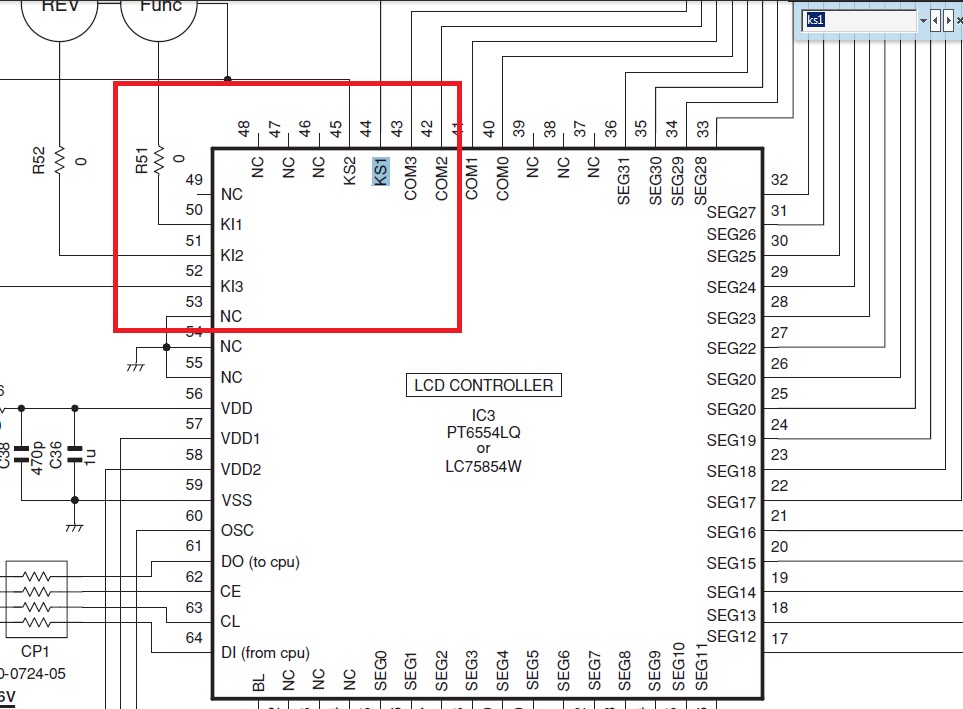TM-271A Disassembly
The CPU controls the scan function of the radio, using a matrix . The matrix determines which buttons on the front panel have been depressed and for how long. Access to the circuit traces is required which are located directly behind the "MR" button on the radio. This requires removing the display unit for the necessary connections.
Disassembly of the radio is very easy. In addition to the display unit, the top cover and sub-cover need to be removed to route the two wires which will be soldered to the circuit traces.
Start by removing the top plastic cover. There are no screws, just gently pull the top off by pulling on either side out, and then lifting it away from the frame. Underneath is an aluminum cover, remove all of the screws from it and then gently pull the cover up to remove it, exposing the top circuit board. Now pull the two rubberized knobs off of the front of the radio.
To remove the display unit, turn the radio over and observe the small notches where the display unit joins with the main body of the radio. Using a flat head screwdriver, gently pop each of the two notches to release the display from the body of the radio.
When viewing the circuit board of the display unit, you will find two small black screws which secure the board to module. Remove the screws and gently pull the circuit board out of the display housing.
The CPU controls the scan function of the radio, using a matrix . The matrix determines which buttons on the front panel have been depressed and for how long. Access to the circuit traces is required which are located directly behind the "MR" button on the radio. This requires removing the display unit for the necessary connections.
Disassembly of the radio is very easy. In addition to the display unit, the top cover and sub-cover need to be removed to route the two wires which will be soldered to the circuit traces.
Start by removing the top plastic cover. There are no screws, just gently pull the top off by pulling on either side out, and then lifting it away from the frame. Underneath is an aluminum cover, remove all of the screws from it and then gently pull the cover up to remove it, exposing the top circuit board. Now pull the two rubberized knobs off of the front of the radio.
To remove the display unit, turn the radio over and observe the small notches where the display unit joins with the main body of the radio. Using a flat head screwdriver, gently pop each of the two notches to release the display from the body of the radio.
When viewing the circuit board of the display unit, you will find two small black screws which secure the board to module. Remove the screws and gently pull the circuit board out of the display housing.
